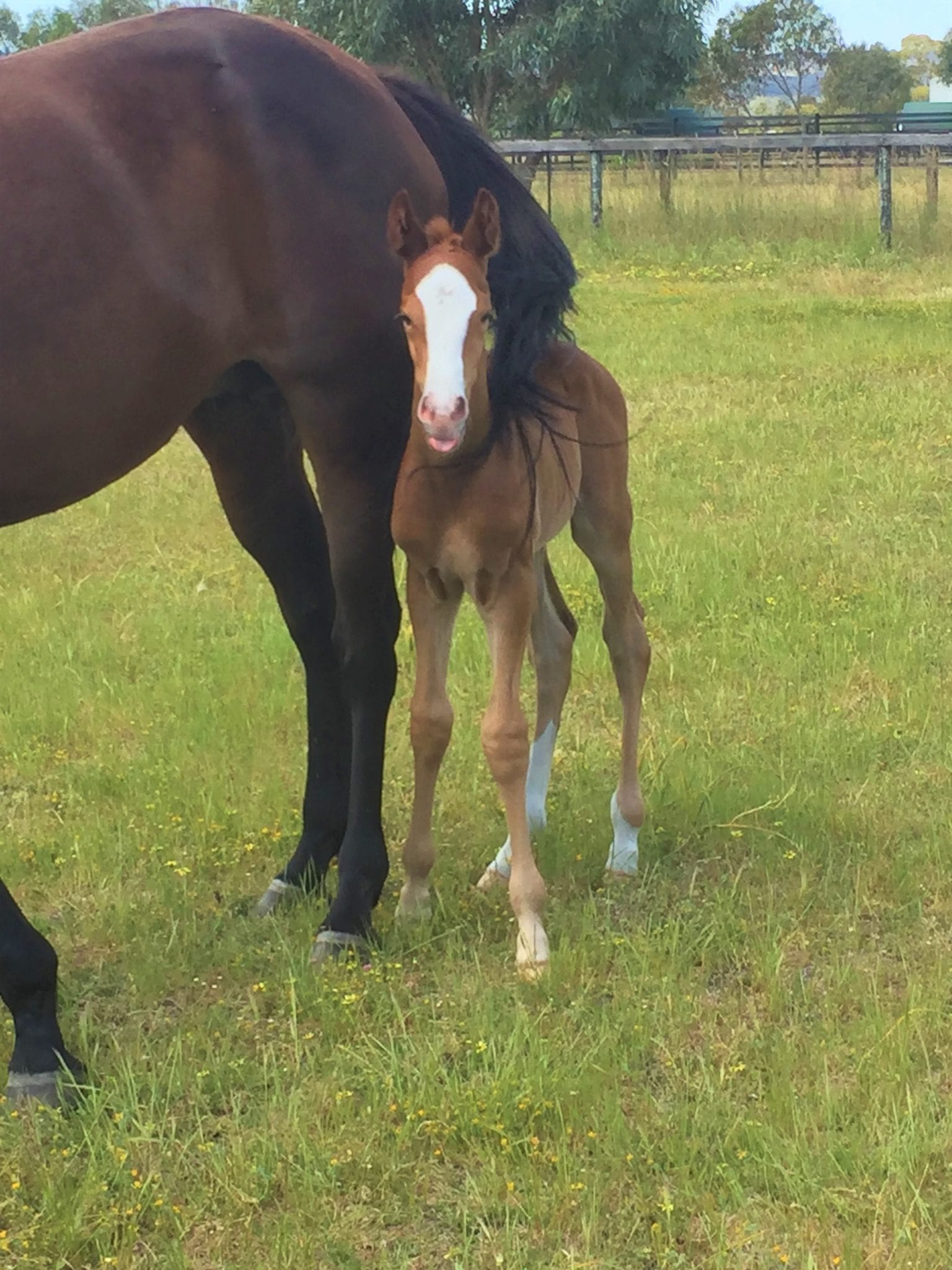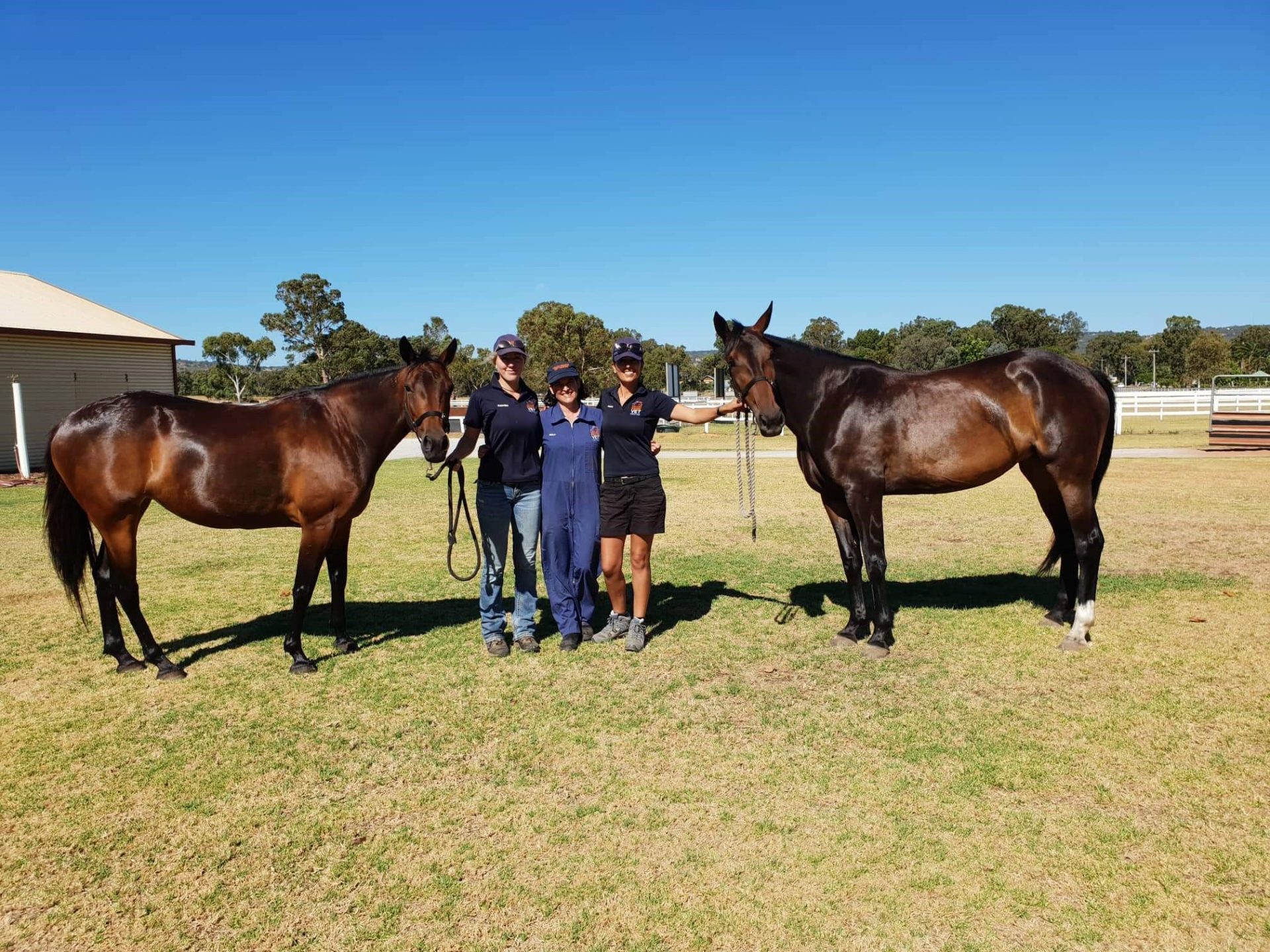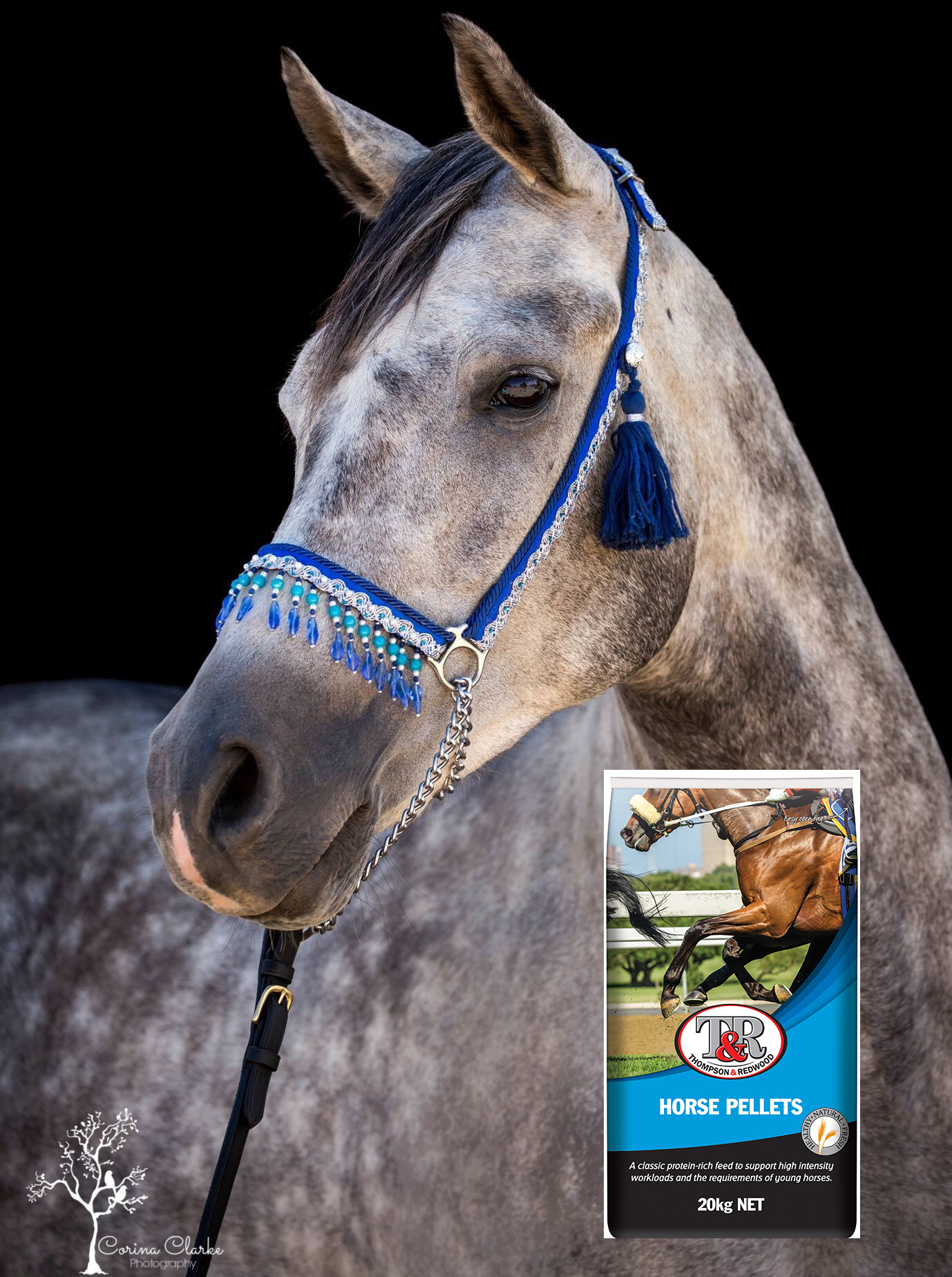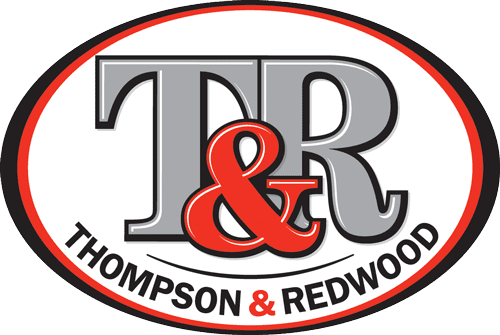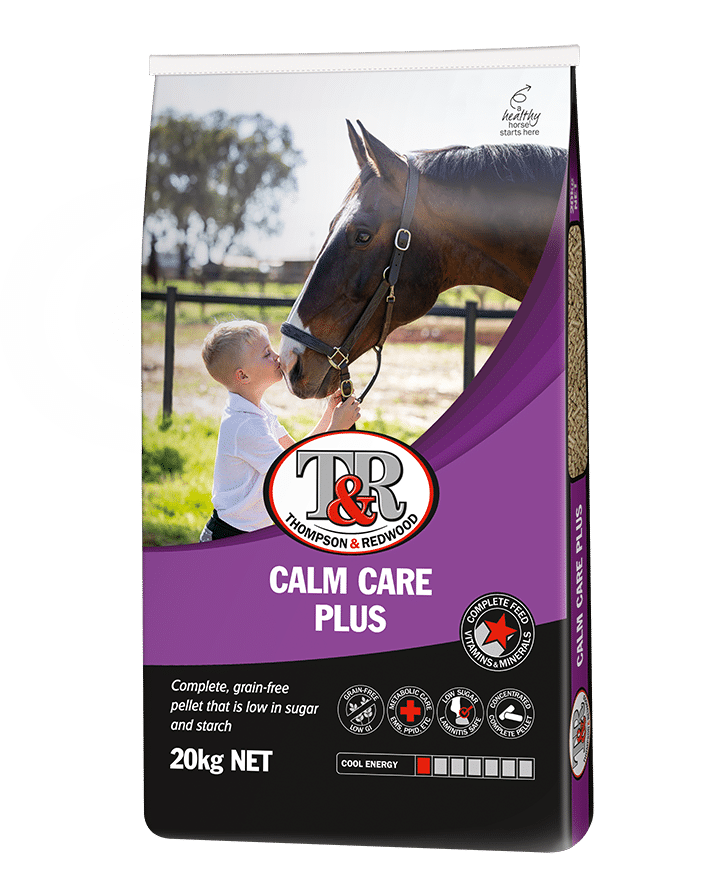
From grass roots to high performance, we have an equine feed to suit
A feed for (almost) every animal on the farm
Quality
Ruminant feeds to support productivity
We’re passionate about poultry
superior feed for broodmares, young stock & commercial studs
with added pre & probiotics
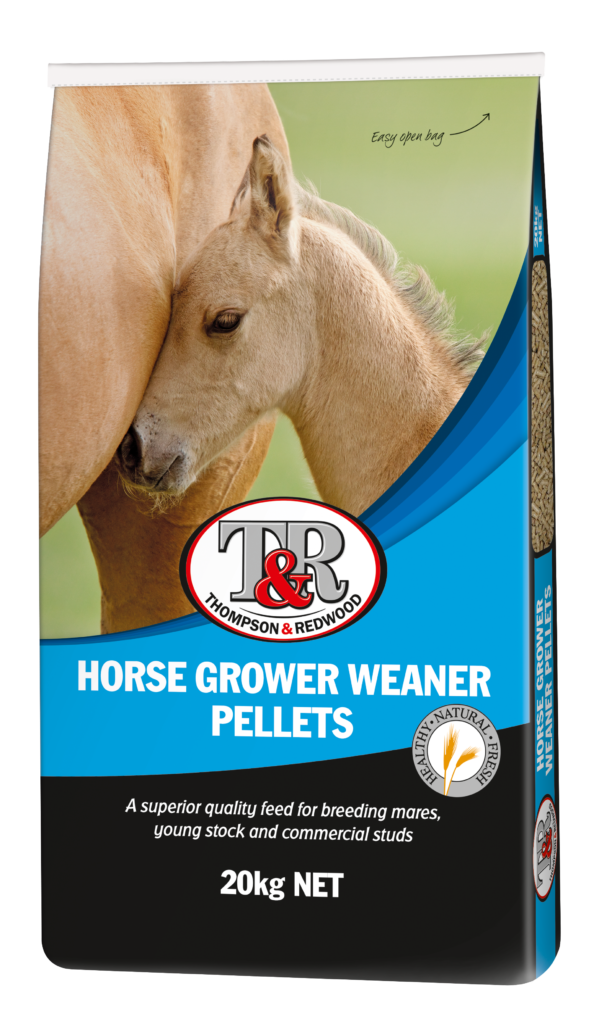
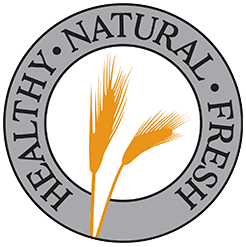
Making healthy, natural and fresh stock feed since 1985
Thompson & Redwood makes affordable and nutritionally balanced stock feed for the horse and agricultural
industries. Our recipes never change and are milled daily from Western Australian grain so you know what
you’re feeding is healthy, natural and fresh.
What's your
horse feeding challenge?
- Fizzy horse?
- Poor keeper?
- At risk of laminitis?
Let our veterinary and nutrition team support you and your horse with our carefully formulated complete horse feeds.
Find the feed most suited to your horse or pony.
What's your
horse feeding challenge?
- Fizzy horse?
- Poor keeper?
- At risk of laminitis?
Let our veterinary team support you and your horse with our carefully formulated complete horse feeds.
Find the feed most suited to your horse or pony.
Hear what customer Sarah has to say about Nelson: "An Epic T&R Senior Transformation! This is Nelson, he is an off the track TB born in 2009. I was actually his yearling handler at Heytesbury Stud when he went through yearling sales. So that is an incredibly small world!
He is living in Kununurra and before feeding the T&R Senior Horse Cubes was struggling with his weight/condition/QLD itch especially with the wet season and build up.
Since moving onto the Senior Cubes he has blossomed. I`m currently waiting for some bags of the new Lupin boost to arrive to try!!"
Sarah is currently leasing Nelson, and her daughter is getting him ready to ride at Kununurra show. Good luck Nelson, and thanks Sarah for sharing his story with us.
#transformation #horsenutrition #horsefeed #horsecubesforseniors #seniorhorsecubes #conditioningfeed #thoroughbred #offthetrack
Jun 18

HAY - How much do you know about the hay you are feeding? Here is some information about hay types, and some important things to be aware of with each:
Teff
➡️Teff is a warm season grass species that can be fed as hay for horses.
⚠️The starch and sugar analysis of Teff can vary, so while it can be considered low in sugar and starch, it isn`t always below a safe level for laminitis/metabolic condition prone horses and ponies.
⚠️Teff (being a C4 species) does contain moderate to high levels of oxalates, so you will need to supplement to reduce the risk of bighead disease.
⚠️ Teff has caused some behavioural changes in horses, linked to alkalosis (showing a high pH result in manure).
Barley
Barley hay or straw can be fed to horses but should be an awn-less variety. The `awns` are the stiff bristles that can grow on the barley head. It does have a similar nutrient profile to Oaten Hay, with NSC often over 16%.
⚠️Both the hay and straw are not suitable for horses prone to laminitis or metabolic conditions.
⚠️Being a cereal it can provide more energy, so be aware of re-balancing energy levels if you notice behavioural changes
⚠️ Watch out for hay that has seed heads that still contain the grain.
Oaten or Wheaten
Oaten and wheaten hay are cereal hays, and a good source of fibre but both the hay and straws are quite high in NSC.
⚠️ WA`s Oaten hay consistently tests between 30-38% but has been recorded as high as 42.63% in Southwest WA.
⚠️ Wheaten has an NSC of around 28.8%
⚠️ They are not suitable for horses prone to laminitis or metabolic conditions
⚠️ If feeding Oaten, make sure you they are not getting too much energy
Rhodes Grass
Rhodes grass is a good quality, low sugar and starch hay, that is low enough in oxalates not to pose a bighead risk. It is more consistent and reliable than teff when it comes to the sugar and starch levels.
⚠️ Rhodes can be high in calcium, iron and potassium, but low in phosphorus and magnesium, so make sure you re-balance your horse`s diet in case they need supplementation.
Jun 17

It`s Friday the 13th! Did you know that black horses, like black cats were considered bad luck in some European folklore? Supposedly it was especially bad luck if they crossed your path on Friday the 13th.
There are all sorts of superstitions about horses that have appeared throughout history, but luckily there is nothing unlucky about a horse or pony with a shiny black coat - it`s actually a sign of good health and well-balanced nutrition 😉
#fridaythe13th #horsefacts #horsehistory
Jun 13

How does feeding fibre help to keep your horse warm in winter? Quality sources of fibre and forages can produce large amounts of body heat when they are digested and fermented, to help keep your horse warm from the inside out during the colder months. Fibre has a higher heat increment (HI) than grains, which do not produce a lot of body heat when consumed.
A horse or pony should be consuming 1.5-2% of their body weight in fibre/forage every day. For a 500kg horse, that’s between 7.5 and 10kg of hay per day!
A diet high in fibre and low in starch not only gives off heat through fermentation but feeds the good bugs in your horse’s hindgut to keep it functioning and healthy.
Feeding a fibre mash like Lupin Fibre Cubes can boost the quality fibre in your horse`s diet and help them to maintain their body heat naturally throughout the colder months.
💡TIP - soak Lupin Fibre Cubes with warm water in winter, for an extra-speedy soak time and nutritious, toasty treat.
Jun 11

RUGGING - is your horse really cold? How do you know if they need a rug?
With our overnight temperatures starting to drop, and winter around the corner, we thought it was a good time to talk about THERMONEUTRAL ZONES and LOWER CRITICAL TEMPERATURE (LTC). Understanding these ranges helps us to make decisions around our horse`s health, feeding regimes and rugging in winter.
Just like with humans, animals have a core temperature that their body needs to maintain for their vital organs to function. As outside temperature decreases, your horse’s body needs to work much harder to maintain its core temperature.
The THERMONEUTRAL ZONE is the range of temperatures between which a horse uses little to no energy to maintain its body temperature.
🌡️ In horses, the average Thermoneutral zone is between 5°C and 25°C.
🌡️ In humans, the average Thermoneutral zone is between 25°C and 30°C.
❓The big difference here is that our range is much narrower, so we feel cold and uncomfortable at a much higher temperature than our horses. It`s not as simple as that though, there are factors that influence how comfortable our horses feel and whether their body has to work harder to stay warm. This is where the LTC comes in.
The LOWER CRITICAL TEMPERATURE (LCT) is the temperature below which they need to increase their metabolic heat and digestible energy intake to maintain their body temperature. For most horses this is between 0°C and 5°C, BUT this varies depending on the climate they are used to. For horses that live in a much milder climate their LTC may be higher, or for those in a much colder climate this may be lower.
There are lots of influences on an individual horse’s LCT, including:
➡️ Whether they have a natural, thick coat or not
➡️ Age (young horses, foals and seniors have a higher LCT)
➡️ Weight and Surface Area to Volume ratio
➡️ Health status (sickness and injury can increase LCT)
➡️ Wind chill factor and moisture in the air
It`s only when temperatures start to drop below the lower critical temperature, that additional dietary energy may be required. #tiptuesday #horsehealth #horsecare
Jun 9

Hey Victoria! Our products are now available through Lily`s Feed on the East Coast. Their first delivery has arrived, and they are stocking lots of our customer favourites, from Lupin Fibre Boost to Calm Care Plus.
Get in touch with the Lily`s team for more information on ordering.
#horsefeed #calmcareplus #healthynaturalfresh #horsenutrition #lupinfibreboost #lupinfibrecubes #lowsugarandstarch #healthyhorses
Jun 9

FAQ FRIDAY! "I`m trying to add weight to my horse but their topline still isn`t great - How can I improve their topline??" We get this one a lot, and there is actually a bit to it because topline is not just weight gain - it`s muscle building. Topline is about so much more than appearance, a strong topline is essential for supporting the spine, maintaining balance and even soundness!
1. 𝗜𝘁`𝘀 𝗻𝗼𝘁 𝗔𝗟𝗟 𝗮𝗯𝗼𝘂𝘁 𝘁𝗵𝗲 𝗳𝗲𝗲𝗱 - 𝗯𝘂𝘁 𝘁𝗵𝗲 𝗳𝗲𝗲𝗱 𝗶𝘀 𝗘𝗦𝗦𝗘𝗡𝗧𝗜𝗔𝗟!
Topline building requires specific types of exercise. Think of it this way, if we sit on the couch watching TV we can`t build strong biceps and a six-pack even if we eat the right food 🏋️
2. 𝗠𝗮𝗸𝗲 𝘀𝘂𝗿𝗲 𝘁𝗵𝗲𝗶𝗿 𝗰𝗮𝗹𝗼𝗿𝗶𝗲 (𝗲𝗻𝗲𝗿𝗴𝘆) 𝗶𝗻𝘁𝗮𝗸𝗲 𝗶𝘀 𝗵𝗶𝗴𝗵 𝗲𝗻𝗼𝘂𝗴𝗵:
Horses need energy to fuel their work, but if you`re looking to build condition, there needs to be enough `left over` to allow the body to repair and build. If they need to dip into energy stores to fuel their work, they can actually break down their topline.
3. 𝗙𝗲𝗲𝗱 𝗮 𝗻𝘂𝘁𝗿𝗶𝘁𝗶𝗼𝘂𝘀 𝗱𝗶𝗲𝘁 - 𝗻𝗼 𝗷𝘂𝗻𝗸 𝗳𝗼𝗼𝗱!
Feeding enough calories doesn`t mean throwing heaps of any old feed at your horse. Think about it, a human athlete can`t build healthy muscle and fitness on a diet of donuts, bread and sugar! 🍩🍞🍨 Make sure they are getting a nutritious, balanced feed with quality fibre and protein.
4. 𝗖𝗵𝗼𝗼𝘀𝗲 𝗵𝗶𝗴𝗵 𝗾𝘂𝗮𝗹𝗶𝘁𝘆 𝗽𝗿𝗼𝘁𝗲𝗶𝗻 𝘀𝗼𝘂𝗿𝗰𝗲𝘀
Building topline is building muscle, and muscle is made up of 70% protein so protein is key! But not all protein is created equal. Your horse’s diet needs to include superior quality sources of protein and amino acids, not just vast quantities. Why? Feeds classed as better sources of protein (like lupins) contain higher amounts of essential amino acids like lysine which are needed for muscle building.
5. 𝗗𝗼𝗻`𝘁 𝗳𝗼𝗿𝗴𝗲𝘁 𝘃𝗶𝘁𝗮𝗺𝗶𝗻𝘀 𝗮𝗻𝗱 𝗺𝗶𝗻𝗲𝗿𝗮𝗹𝘀
Their diet needs to meet all of their vit & min requirements, because deficiencies or imbalances (e.g. zinc deficiency) can impact topline building.
#topline #toplinebuilding #performancehorse #showhorse #horsehealth #horsefeed #horsenutrition
Jun 5

WORLD ENVIRONMENT DAY 2025 - At T&R, sustainability is at the heart of our operations, and we are committed to constantly improving and evolving to care for the land and environment around us.
Just a few of the ways we continue to reduce our environmental impact include:
🌿Reducing the fibre weave of our bags to reduce landfill and carbon
🌿Include a portion of recycled materials in our bag material
🌿Working with recycling business to develop a recycling program for our bags.
🌿Removing antibiotics from our feeds to help producers reduce the use of in-feed antibiotics in livestock production.
🌿Including natural supplements in our ruminant feeds to decrease methane emissions
🌿Reduce wastage – our feeds are made to order, so we only produce what our stockists and customers need. This not only maximises freshness but reduces the risk of product and ingredient wastage.
🌿Water usage – constant audit of mill to monitor/reduce water usage
Reducing the fibre weave of our bags alone has saved an estimated 130 tonnes of plastic from landfill and reduced our Carbon Dioxide emissions by 190 tonnes each year!
Our bags are an area we continue to work on, while we do make them from recyclable materials, Western Australia doesn`t currently have the recycling facilities to manage soft plastics.
#WorldEnvironmentDay2025 #BeatPlasticPollution #sustainability #thompsonandredwood
Jun 5

PCWA Mount of the Month - Meet February`s winner `Rebel` and his 11yo rider Holly. Did you know that we run a monthly giveaway with Pony Club Western Australia, to champion those super pony club mounts that we all know and love, that make an impact on the lives of young riders.
"This is Rebel, he is 18 years of age and has been a Pony Club WA member for over 10 years.
Rebel is shown on the PCWA website Eventing page with his prior owner April who as a teenager successfully evented him, April is now a nurse and PCWA coach when she has the time.
Rebel is now ridden by 11 year Holly, who in 2024 was a team member of the Peel MHPC winning musical ride at the State Dressage champs and attended the Perth Royal Show Pony Club day.
Rebel likes to help open the gate in the PC mount classes and his favourite pony club activity is Cross Country."
It was great to see Rebel and Holly enjoying their prize pack, and learn that rebel is fuelled by T&R feeds.
Would you like to nominate a Pony Club Mount of the Month? Head to the form below:
https://form.jotform.com/250351853807054?fbclid=IwY2xjawKtGGtleHRuA2FlbQIxMABicmlkETFiQW5wc3VGUlVaNFB4QzJzAR5tebci1ZmQRvk3Ayklayip3D1Kbwj3zwZGS-ZANflhkjItzj_XQfqSANg-dg_aem_ZdKRzkJ33_WhydSIHTtHmw
Jun 4

Hear what customer Sarah has to say about Nelson: "An Epic T&R Senior Transformation! This is Nelson, he is an off the track TB born in 2009. I was actually his yearling handler at Heytesbury Stud when he went through yearling sales. So that is an incredibly small world!
He is living in Kununurra and before feeding the T&R Senior Horse Cubes was struggling with his weight/condition/QLD itch especially with the wet season and build up.
Since moving onto the Senior Cubes he has blossomed. I'm currently waiting for some bags of the new Lupin boost to arrive to try!!"
Sarah is currently leasing Nelson, and her daughter is getting him ready to ride at Kununurra show. Good luck Nelson, and thanks Sarah for sharing his story with us.
#transformation #horsenutrition #horsefeed #horsecubesforseniors #seniorhorsecubes #conditioningfeed #thoroughbred #offthetrack
... See MoreSee Less


- likes love 14
- Shares: 0
- Comments: 0
0 CommentsComment on Facebook
HAY - How much do you know about the hay you are feeding? Here is some information about hay types, and some important things to be aware of with each:
Teff Hay
➡️Teff is a warm season grass species that can be fed as hay for horses.
⚠️The starch and sugar analysis of Teff can vary, so while it can be considered low in sugar and starch, it isn't always below a safe level for laminitis/metabolic condition prone horses and ponies.
⚠️Teff (being a C4 species) does contain moderate to high levels of oxalates, so you will need to supplement to reduce the risk of bighead disease.
⚠️ Teff has caused some behavioural changes in horses, linked to alkalosis (showing a high pH result in manure).
Barley Hay
Barley hay or straw can be fed to horses but should be an awn-less variety. The 'awns' are the stiff bristles that can grow on the barley head. It does have a similar nutrient profile to Oaten Hay, with NSC often over 16%.
⚠️Both the hay and straw are not suitable for horses prone to laminitis or metabolic conditions.
⚠️Being a cereal it can provide more energy, so be aware of re-balancing energy levels if you notice behavioural changes in your horse or pony.
⚠️ Watch out for hay that has seed heads that still contain the grain.
Oaten or Wheaten Hay
Oaten and wheaten hay are cereal hays, and a good source of fibre but both the hay and straws are quite high in NSC.
⚠️ WA's Oaten hay consistently tests between 30-38% but has been recorded as high as 42.63% in Southwest WA.
⚠️ Wheaten has an NSC of around 28.8%
⚠️ They are not suitable for horses prone to laminitis or metabolic conditions
⚠️ If feeding Oaten, make sure you balance your horse's concentrates, so they are not getting too much energy
⚠️The high NSC level may not be suitable for horses with sensitive stomachs or a history of ulcers
Rhodes Grass
Rhodes grass is a good quality, low sugar and starch hay, that is low enough in oxalates not to pose a bighead risk. It is more consistent and reliable than teff when it comes to the sugar and starch levels.
⚠️ Rhodes can be high in calcium, iron and potassium, but low in phosphorus and magnesium, so make sure you re-balance your horse's diet in case they need supplementation.
⚠️ If some horses and ponies don't like eating the Rhodes hay, you can spray it with a stevia solution to it to make it more palatable.
Straw
Straw can be used to replace a portion of the hay in your horse’s diet to help extend hay supply. You can use straw for up to 20% of their daily fibre/forage intake.
⚠️Straw is not laminitis friendly. The average straw NSC is over 17%, as most straws come from cereal crops.
⚠️Make sure straw has been ARGT tested.
⚠️Straw must not be fed to foals, weanlings or yearlings as their digestive system is not mature enough to digest it properly.
⚠️If you need to feed higher than 20% straw, consult with your vet first to make sure that your horse is a candidate for this level of straw.
If you are unsure about changing hays and what your horse needs, feel free to reach out to our nutrition team or contact an equine nutritionist to rebalance your horse's diet.
#tiptuesday #hay #horsefeed #horsenutrition
... See MoreSee Less

7 CommentsComment on Facebook
It's Friday the 13th! Did you know that black horses, like black cats were considered bad luck in some European folklore? Supposedly it was especially bad luck if they crossed your path on Friday the 13th.
There are all sorts of superstitions about horses that have appeared throughout history, but luckily there is nothing unlucky about a horse or pony with a shiny black coat - it's actually a sign of good health and well-balanced nutrition 😉
#fridaythe13th #horsefacts #horsehistory
... See MoreSee Less

0 CommentsComment on Facebook
How does feeding fibre help to keep your horse warm in winter? Quality sources of fibre and forages can produce large amounts of body heat when they are digested and fermented, to help keep your horse warm from the inside out during the colder months. Fibre has a higher heat increment (HI) than grains, which do not produce a lot of body heat when consumed.
A horse or pony should be consuming 1.5-2% of their body weight in fibre/forage every day. For a 500kg horse, that’s between 7.5 and 10kg of hay per day!
A diet high in fibre and low in starch not only gives off heat through fermentation but feeds the good bugs in your horse’s hindgut to keep it functioning and healthy.
Feeding a fibre mash like Lupin Fibre Cubes can boost the quality fibre in your horse's diet and help them to maintain their body heat naturally throughout the colder months.
💡TIP - soak Lupin Fibre Cubes with warm water in winter, for an extra-speedy soak time and nutritious, toasty treat.
... See MoreSee Less


 +2
+2
2 CommentsComment on Facebook
RUGGING - is your horse really cold? How do you know if they need a rug?
With our overnight temperatures starting to drop, and winter around the corner, we thought it was a good time to talk about THERMONEUTRAL ZONES and LOWER CRITICAL TEMPERATURE (LTC). Understanding these ranges helps us to make decisions around our horse's health, feeding regimes and rugging in winter.
Just like with humans, animals have a core temperature that their body needs to maintain for their vital organs to function. As outside temperature decreases, your horse’s body needs to work much harder to maintain its core temperature.
The THERMONEUTRAL ZONE is the range of temperatures between which a horse uses little to no energy to maintain its body temperature.
🌡️ In horses, the average Thermoneutral zone is between 5°C and 25°C.
🌡️ In humans, the average Thermoneutral zone is between 25°C and 30°C.
❓The big difference here is that our range is much narrower, so we feel cold and uncomfortable at a much higher temperature than our horses. It's not as simple as that though, there are factors that influence how comfortable our horses feel and whether their body has to work harder to stay warm. This is where the LTC comes in.
The LOWER CRITICAL TEMPERATURE (LCT) is the temperature below which they need to increase their metabolic heat and digestible energy intake to maintain their body temperature. For most horses this is between 0°C and 5°C, BUT this varies depending on the climate they are used to. For horses that live in a much milder climate their LTC may be higher, or for those in a much colder climate this may be lower.
There are lots of influences on an individual horse’s LCT, including:
➡️ Whether they have a natural, thick coat or not
➡️ Age (young horses, foals and seniors have a higher LCT)
➡️ Weight and Surface Area to Volume ratio
➡️ Health status (sickness and injury can increase LCT)
➡️ Wind chill factor and moisture in the air
It's only when temperatures start to drop below the lower critical temperature, that additional dietary energy may be required. #tiptuesday #horsehealth #horsecare
... See MoreSee Less

9 CommentsComment on Facebook
